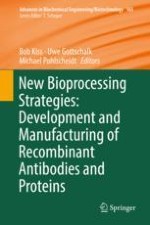2018 | OriginalPaper | Chapter
A Different Perspective: How Much Innovation Is Really Needed for Monoclonal Antibody Production Using Mammalian Cell Technology?
Authors : Brian Kelley, Robert Kiss, Michael Laird
Published in: New Bioprocessing Strategies: Development and Manufacturing of Recombinant Antibodies and Proteins
Publisher: Springer International Publishing
Activate our intelligent search to find suitable subject content or patents.
Select sections of text to find matching patents with Artificial Intelligence. powered by
Select sections of text to find additional relevant content using AI-assisted search. powered by
